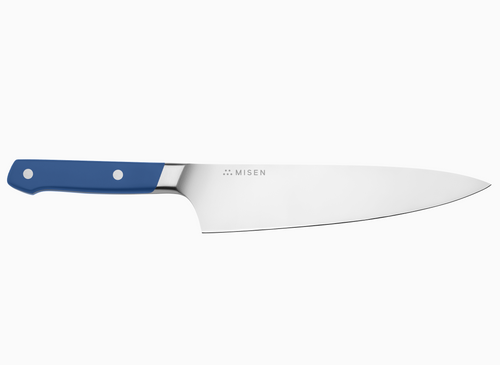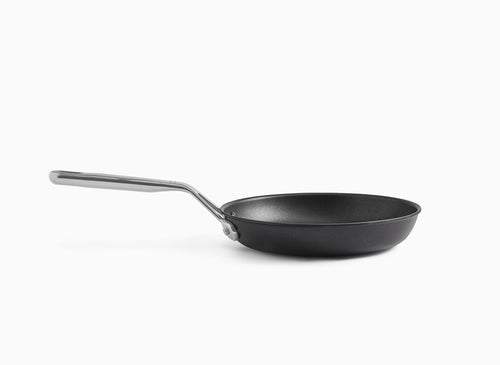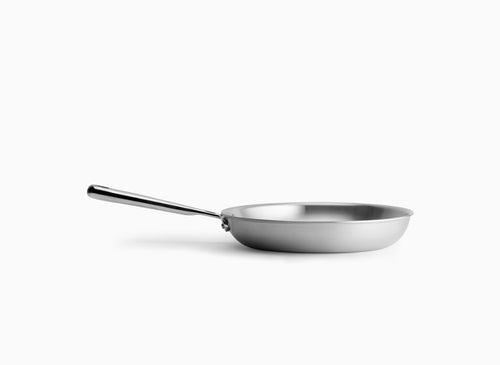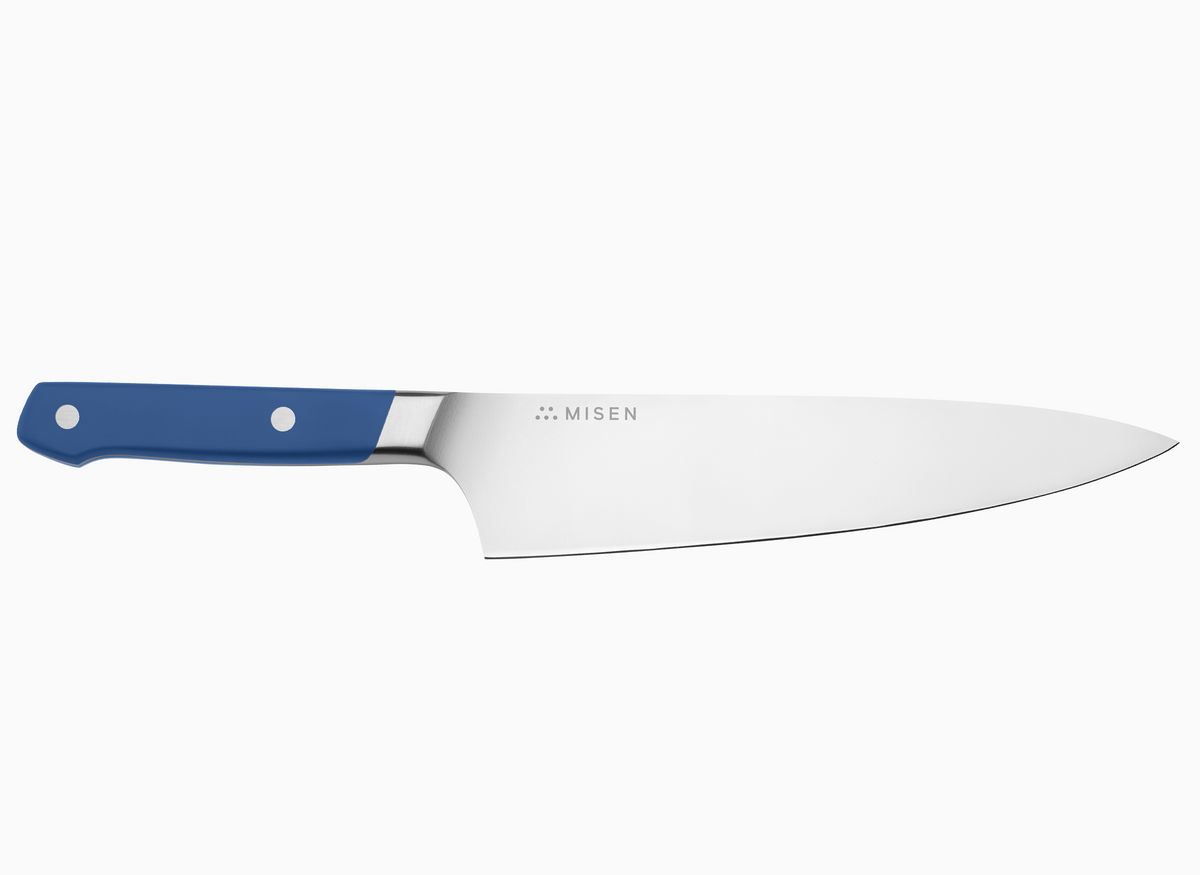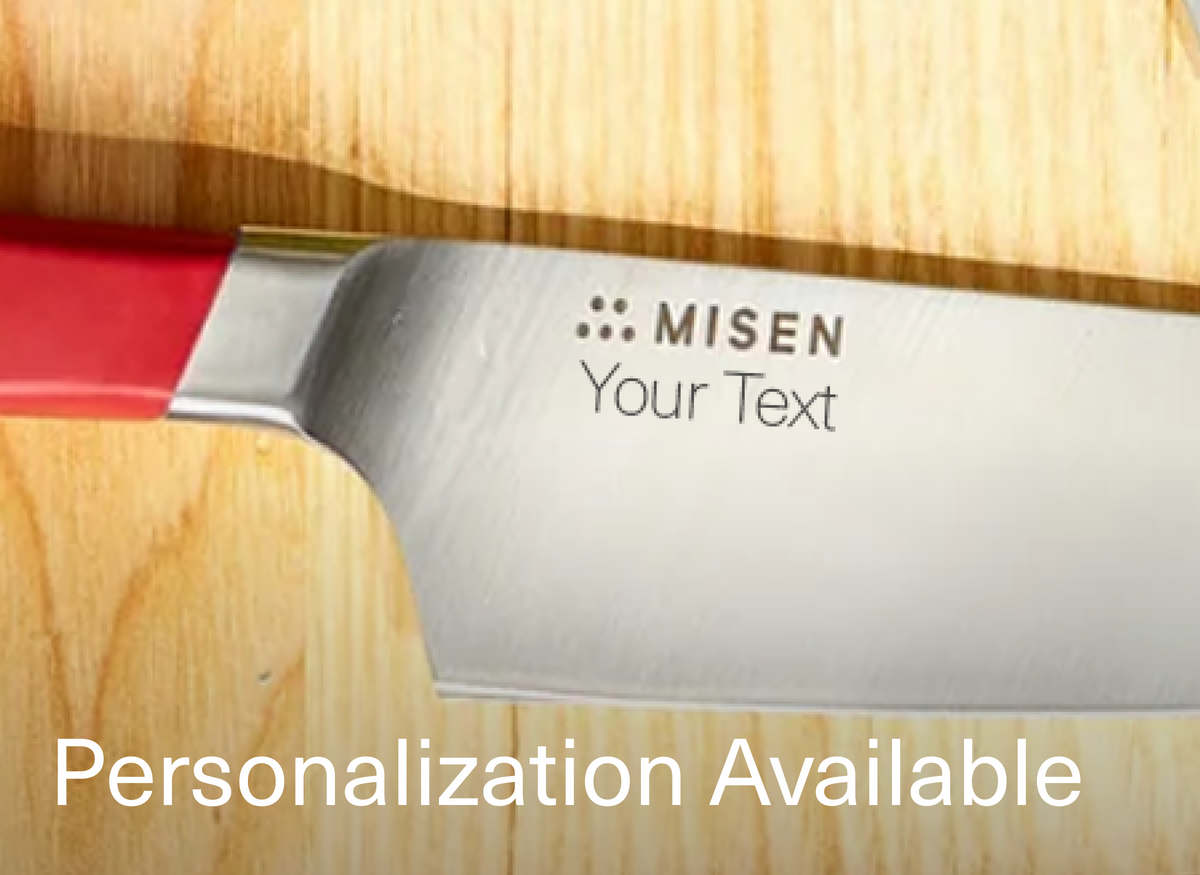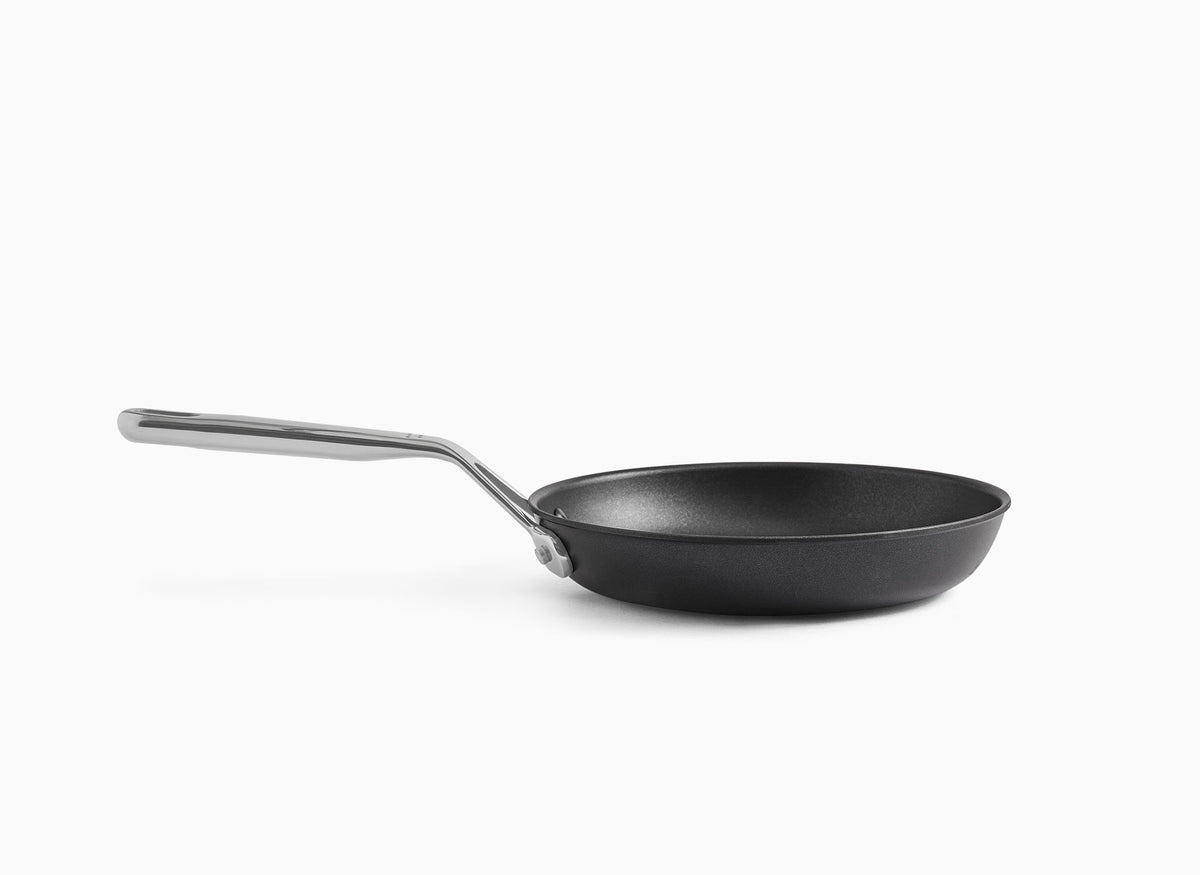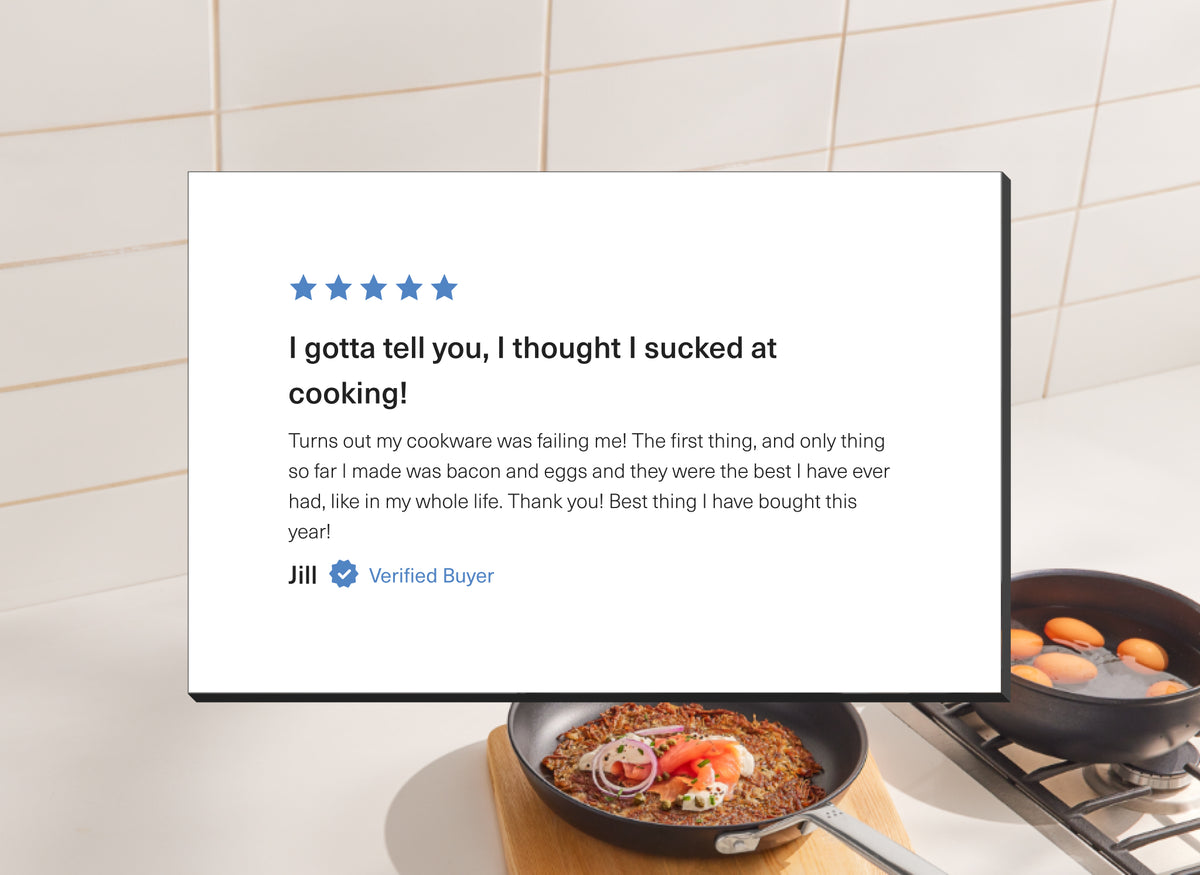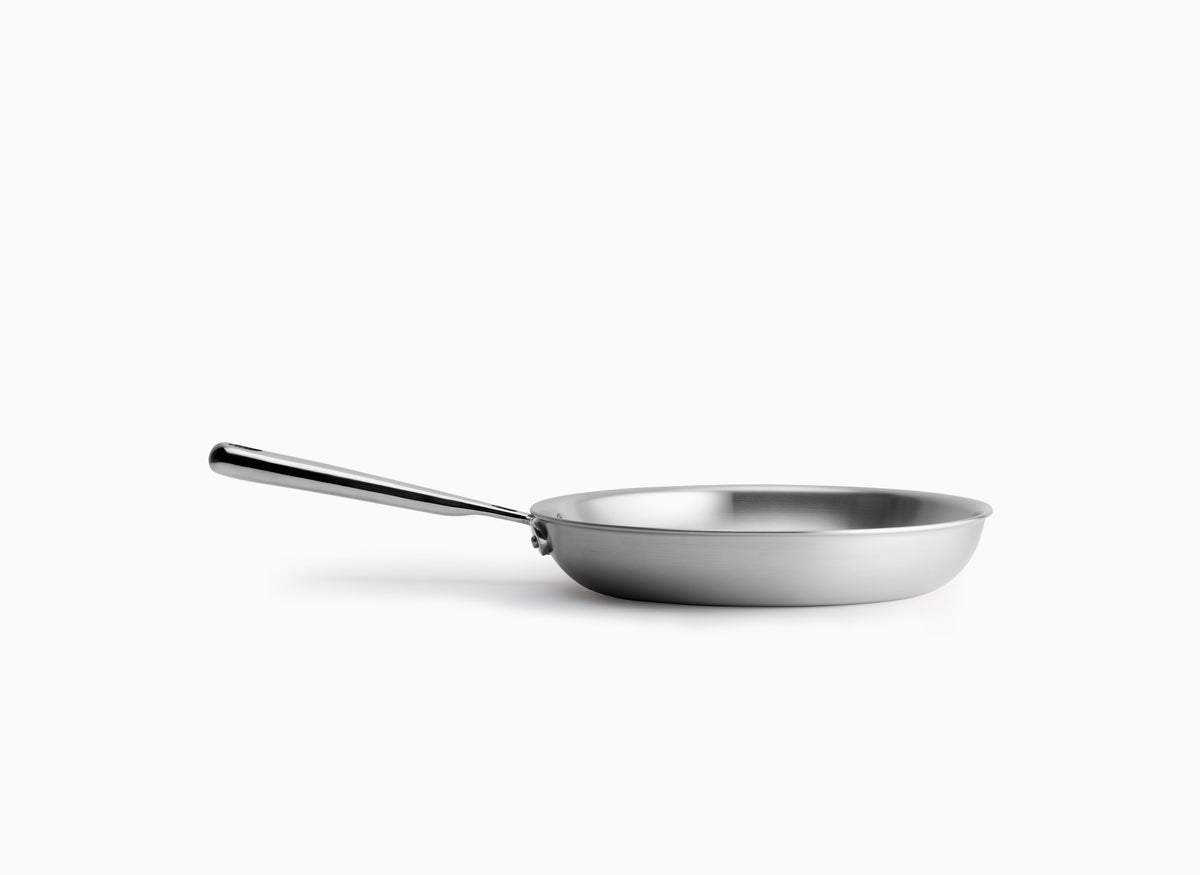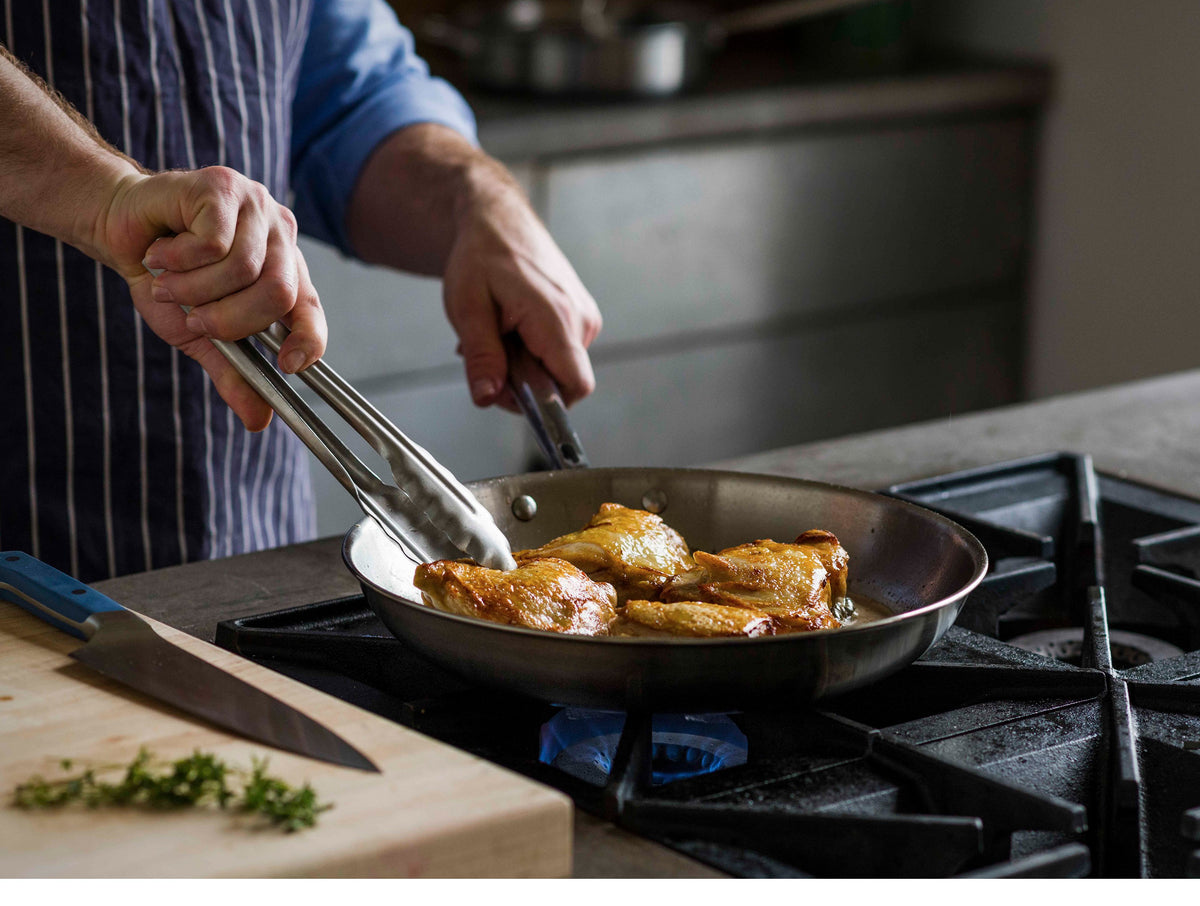Care for your Cookware
Iron is notorious for getting rusty. Let it air dry, or clean it with corrosive cleaners, and you’ve got an orange mess. That’s why stainless steel was invented. It’s still mostly iron, but with a couple of other metals (primarily chromium) mixed in. This alloy is extremely resistant to rust, with a shiny luster that makes for easy-to-maintain cookware. A few basic techniques will keep your steel stainless forever.
PREVENTING STAINS
Although stainless cookware is simple to clean, the easiest way to maintain pristine pains to avoid any stains in the first place. For the most part, that’s a matter of common sense and a little knowhow.
Don’t leave a pan on the flame and forget about it—if you do, it’ll scorch, and scorch marks are a pain to clean. Set a timer if you think you might get distracted.
Preheat a pan before adding food. When proteins in food are cooked in contact with a metal surface, they tend to cling tightly to the metal. If a pan is good and hot when the food goes into it, though, water in the food will instantly boil and form a tiny vapor barrier between the food and the pan, which helps prevent those adhesions from forming. Hear that sizzle? It’s steam keeping your pan surface clean.
Don’t overcrowd the pan. Dropping a lot of cold food into a hot pan makes the pan’s temperature drop as well, and it takes a moment to heat back up. During that interval, those proteins can cling.
Use oil to prevent sticking. Opinions abound as to whether or not you should wait until a pan is hot before adding oil. It’s not necessary to wait, and watching the oil as it heats can be a good indicator of when the pan’s ready to cook. If you’re planning to sear a steak or another very-high-heat project, oiling the meat itself (rather than the pan) can prevent excess oil from smoking.
Preheat, but don’t over-preheat. When stainless steel gets very hot, its surface—which naturally has a thin protective layer of metal oxide—develops more of this layer, which will look like a bluish-purple rainbow discoloration on the surface. It doesn’t affect the food or the cooking process, but if you are a lover of bright silver cookware, it’s irritating. Fortunately, it’s easily removed.
CLEANING YOUR COOKWARE
Feel free to put Misen stainless steel cookware in the dishwasher. The edges are sealed, so the heat-conducting aluminum layers inside are not exposed.
Preheat a pan before adding food. When proteins in food are cooked in contact with a metal surface, they tend to cling tightly to the metal. If a pan is good and hot when the food goes into it, though, water in the food will instantly boil and form a tiny vapor barrier between the food and the pan, which helps prevent those adhesions from forming. Hear that sizzle? It’s steam keeping your pan surface clean.
Don’t overcrowd the pan. Dropping a lot of cold food into a hot pan makes the pan’s temperature drop as well, and it takes a moment to heat back up. During that interval, those proteins can cling.
Use oil to prevent sticking. Opinions abound as to whether or not you should wait until a pan is hot before adding oil. It’s not necessary to wait, and watching the oil as it heats can be a good indicator of when the pan’s ready to cook. If you’re planning to sear a steak or another very-high-heat project, oiling the meat itself (rather than the pan) can prevent excess oil from smoking.
Preheat, but don’t over-preheat. When stainless steel gets very hot, its surface—which naturally has a thin protective layer of metal oxide—develops more of this layer, which will look like a bluish-purple rainbow discoloration on the surface. It doesn’t affect the food or the cooking process, but if you are a lover of bright silver cookware, it’s irritating. Fortunately, it’s easily removed.
